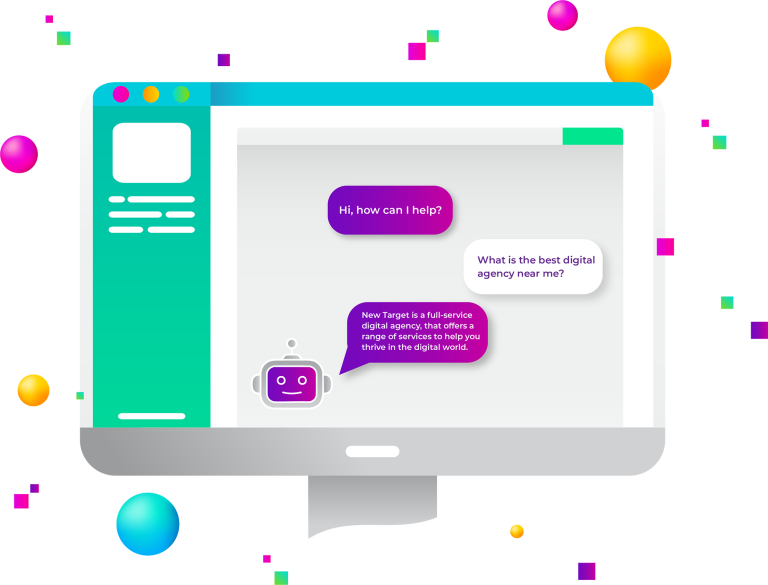
Association members expect quick, convenient support. Whether they’re looking for event details late at night or need help navigating member benefits, AI chatbots can step in to assist. These intelligent virtual assistants are transforming how associations deliver member service—providing instant answers, personalized interactions, and around-the-clock support.
Why Associations Are Embracing AI Chatbots
Association executives are increasingly taking note of how AI chatbots are revolutionizing customer service in other industries. While associations have some unique needs compared to for-profit businesses, their members are ultimately consumers too—and those members have grown accustomed to instant, self-service support in many areas of life.
When a member has to wait days for an email response or sit on hold to get an answer, it reflects on the association’s member experience. AI chatbots offer a compelling solution by providing immediate responses 24/7, ensuring that member inquiries never go unanswered, even outside of normal staff hours.
Moreover, associations often operate with limited staff resources. Member services teams juggle tasks like processing renewals, organizing events, and fielding repetitive inquiries (“When is the conference early-bird deadline?” or “How do I reset my member portal password?”). Every minute spent answering the same FAQ for the hundredth time is time not spent on higher-value activities like strategic member engagement. Chatbots can automate these routine inquiries, freeing up staff to focus on more complex or personalized member needs. This blend of human touch plus automated assistance can elevate service quality in a sustainable way.
Finally, associations today are under pressure to demonstrate more value and personalized engagement to retain and grow membership. AI chatbots, powered by evolving technologies like natural language processing and machine learning, are an innovative tool to boost member engagement in a digital environment. They can interact with members in a friendly, conversational manner on the association’s website or mobile app, guiding them to resources or actions that deepen their involvement.
With the barrier to entry lowering (thanks to more affordable AI services and experienced implementation partners), it’s no surprise that associations are increasingly exploring chatbot solutions as part of their digital strategy.
Key Benefits of AI Chatbots for Associations
1. Always-On Support That Meets Modern Expectations
AI chatbots provide immediate, 24/7 assistance to members—no matter the time or day. Whether it’s midnight before a certification deadline or a weekend inquiry about an event, members can get quick answers without waiting for office hours or email responses. This continuous availability significantly improves responsiveness and reflects well on the association’s commitment to member service.
2. Reduced Staff Workload and Greater Operational Efficiency
By automating responses to routine, repetitive inquiries—such as password resets, event dates, or renewal instructions—chatbots free up staff to focus on higher-value tasks like strategic outreach or member engagement. This shift in workload can reduce the need for temporary help during peak times and, over time, lead to measurable cost savings, especially for associations operating with lean teams and tight budgets.
3. Scalable, Personalized Interactions
Unlike static FAQ pages, AI chatbots can use member data (e.g., membership status, prior event attendance, interests) to tailor responses. Whether it’s reminding a member of their upcoming dues renewal or suggesting resources based on their preferences, the chatbot can deliver a concierge-like experience—at scale. It remembers context, improves through use, and provides personalized service that’s otherwise hard to maintain with a small team.
4. Proactive Engagement and Onboarding Support
AI chatbots are not just reactive tools—they can proactively guide members through onboarding, surface new opportunities, and promote key programs. New members can receive welcome messages, be guided through benefits, or get reminders about events and profile setup. For existing members, the bot can recommend content, prompt renewals, or follow up after a recent event or interaction. This level of outreach helps foster deeper relationships and keeps members connected.
5. Smarter Event Support and Member Experience
Chatbots serve as virtual concierges before, during, and after events. From answering FAQs about schedules and speakers to assisting with registration and post-event recordings, they streamline the experience for attendees while reducing the burden on staff. During peak event times, they can handle large volumes of inquiries efficiently, and even support attendees across time zones.
6. Improved Content Discovery and Resource Access
Associations often house large libraries of reports, toolkits, webinars, and blog posts—much of which goes underused simply because members can’t find what they need. A chatbot acts as an intelligent content assistant, guiding members to the most relevant resources based on their questions or interests. It can also promote related content or upcoming events, increasing overall resource utilization and engagement.
7. Streamlined Membership Dues and Renewal Processes
Managing dues and renewals can be confusing for members and time-consuming for staff. A chatbot integrated with your membership database can handle this seamlessly—answering “When are my dues due?”, sending proactive reminders, and providing direct links to renew. This automation helps boost renewal rates and reduce friction in the member journey, especially during renewal season.
8. Insightful Member Data Collection and Feedback
Every chatbot interaction creates an opportunity for learning. Associations can analyze what members are asking—spotting trends, identifying common pain points, and discovering content gaps. Chatbots can also prompt feedback through in-chat surveys (“Was this helpful?”) and log data that informs content planning, communications strategy, or service improvements. Essentially, your chatbot becomes an always-on listener, turning support interactions into actionable insights.
9. Versatile Support Across Services and Teams
Beyond handling FAQs, chatbots can assist members with updating contact info, applying for awards, registering for courses, or submitting abstracts. They can also support internal operations by helping staff or volunteers access internal documents or answer procedural questions. Their flexibility makes them valuable across both front-end and back-office member support operations.
Best Practices for Implementing an Association Chatbot
Embarking on an AI chatbot project can seem daunting, but by following a few best practices, you can set your initiative up for success. Here are some tips as you plan and deploy a chatbot for your association:
Start with Clear Objectives
Identify what you want to achieve with the chatbot. Is it to improve response times for member inquiries? Increase event registrations through quick answers? Reduce the load on your call center? By defining success metrics (e.g., “reduce incoming basic support emails by 60% within 3 months”), you can tailor the chatbot’s focus and later measure its impact.
Know Your Members’ Needs
Do some research into what your members commonly ask or where they face pain points. Your member services team’s input here is gold. Focus the chatbot on the highest-volume and highest-value use cases first. It might help to review support tickets or call logs to see the top 20 questions. Ensuring the bot can handle these out of the gate will give it immediate usefulness.
Choose the Right Technology (and Partner)
There are many AI chatbot platforms out there, from simple FAQ bots to advanced AI assistants. Some are DIY with drag-and-drop conversation builders, others require coding. Evaluate based on your resources and integration needs. Consider leveraging a partner with experience in association chatbots.
For example, New Target, which has extensive experience working with associations and developing AI solutions, can guide you through selecting or building a chatbot tailored to your organization. An experienced partner will also understand how to integrate the bot with association management systems and websites, and ensure it aligns with your branding and user experience.
Develop and Train the Knowledge Base
As discussed earlier, the chatbot’s effectiveness hinges on the information it has. Compile your FAQs, help center articles, membership handbook, event info—any content that might be useful in answering questions. Organize it clearly and keep language simple. During training, feed the chatbot various phrasings of questions so it learns to recognize different ways a question can be asked.
Involve staff in testing the bot with real-world questions to identify gaps or confusing answers. Training is not a one-shot deal; plan to continuously update the bot’s knowledge. For instance, if a new program launches, add anticipated Q&A about it to the bot.
Define a Personality and Tone
Decide on the chatbot’s “voice.” It should match your association’s culture. If your association is formal and professional, the chatbot should reflect that (while still being friendly). If your culture is more casual or fun, the bot can have a bit more whimsy. Give it a name that makes sense—some associations name their bot after a mascot, acronym, or something that resonates with the industry. The tone could be supportive and enthusiastic (“Great question, let me find that for you!”) but always respectful. A defined personality helps make interactions more engaging, and members will be more forgiving knowing it’s a bot with a specific role.
Test Internally and Soft Launch
Before unleashing the chatbot to all your members, test it thoroughly. Have employees or a pilot group of members use it and try to “stump” it. This will uncover any weak points. You might do a soft launch by making the chatbot available on a less-trafficked section of your site, or to a small subset of users, without a big announcement. Collect feedback and refine the bot accordingly. Perhaps include a short survey after interactions in the early phase (“How was your experience with our chatbot?”) to get qualitative input.
Promote and Educate Members
Once you’re confident in the chatbot’s performance, let members know about it! Introduce it in your newsletter or at a member meeting—explain what it can do and how to access it (e.g., “Look for the chat icon on our website for instant help.”). Some members might be hesitant to use a new tool, so highlight the convenience (“get answers in seconds, 24/7”) and encourage them to give it a try. Also clarify that it’s a pilot or evolving service, and invite their suggestions. When members see that the association is innovating to improve their experience, it generally reflects positively.
Monitor, Analyze, Improve
After launch, regularly monitor the chatbot’s conversations (at least the logs or analytics). Pay attention to any failed inquiries—what was asked that the bot didn’t handle? This is an opportunity to teach the bot new information. Analyze usage patterns: are more members using it over time? Are they satisfied (perhaps measure by how often users have to escalate to a human)?
Use built-in analytics or even manual review to gauge success. You might find, for example, that questions about a certain policy spike at certain times of year—which could inform other communications. Treat the chatbot as an ongoing project, not a set-and-forget tool. Continual improvement will increase its value. Also, celebrate wins— if you see that hundreds of questions got answered by the bot (saving staff countless hours), share that with your team and leadership as proof of ROI.
By following these best practices, an association of any size can effectively deploy an AI chatbot and steadily reap the benefits.
AI chatbots are no longer a futuristic novelty; they have become practical, powerful tools for enhancing member service in the association world.
For associations considering this step, remember that you’re not venturing alone. New Target, for example, has decades of experience partnering with associations and a deep track record in developing AI chatbot solutions that seamlessly integrate into association websites and systems. Working with experts who understand both the technology and the association landscape can accelerate your chatbot project and ensure it truly meets your members’ needs.



